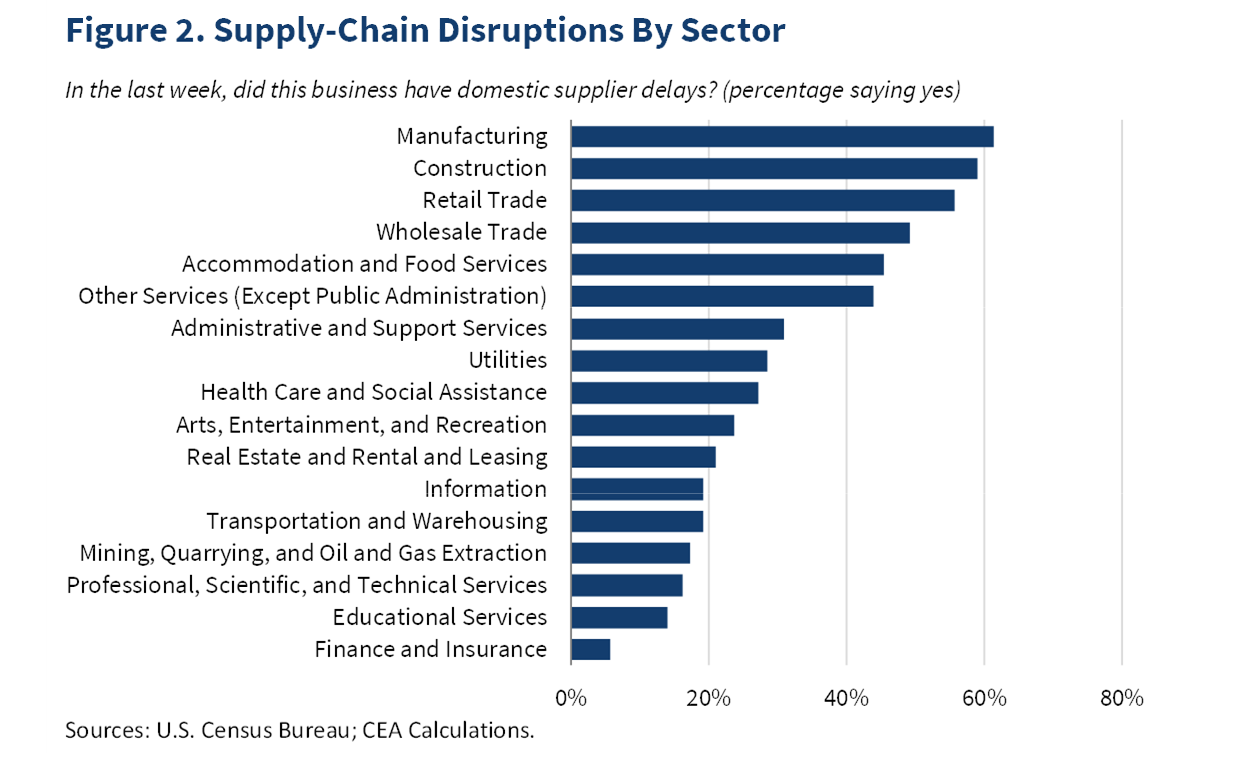Best Practices for Keeping Your Inventory ‘Evergreen’
Since the onset of the pandemic, we’ve experienced significant disruptions in the global supply chain. No business, whether product or service-oriented, has escaped the impact of limited products or component availability and long lead times (see charts below). Now is the time, more than ever, to re-think sourcing, stocking, and sales strategies.
Retail Businesses
Ensuring that your business has well-defined standard operating procedures (SOPs) is the first step in building resiliency to external shocks in supply chain. Retailers, the second step is implementing a point-of-sale (POS) system that helps you better manage your inventory and deliver insights into your customer purchase habits.
Larger, more complex businesses often implement wide-ranging enterprise resource planning (ERP) systems covering all aspects of the business. For smaller, less complex businesses, a POS solution offers you basic reporting, some degree of customer relationship management (CRM) capability, and real-time inventory management.
A POS system that collects cash (or credit) from your customers also forces the retailer to transition from a monthly, manual inventory count to an ‘evergreen’ inventory list of products on-hand. The inventory, now barcoded, is automatically updated each time a product is sold or a product is received into inventory. Keeping track of your inventory in real-time is more important than ever when retailers are faced with historically low levels of inventory (and product availability).
Benefits
There are many good POS solutions. When evaluating the one that is the best fit for your business, compare the benefits of each to your overall business goals (or evaluate against your current ‘pain points’ managing the business). You also want to make sure that the POS you select is a good match for your specific retail sector or industry.
The benefits of barcoding and automating inventory management include, but are not limited to:
Product standardization (i.e., naming conventions, product attributes, stock-keeping unit assignments, etc.);
Automated inventory counts, which offers efficiencies in the month-end closing process for retailers;
Improved price/margin/cost control:
You have the option of using the traditional FIFO (first-in, first-out) accounting method, but I prefer using the moving average price (MAP) valuation method. The latter, especially during a period of supply chain disruptions and volatile supply prices, helps the business owner to respond less frenetically in retail price changes. In the MAP method scenario, a business receives new inventory of the same stock-keeping unit (SKU) at a different cost and/or supplier and the system automatically adjusts the average inventory value at the time of receipt. By having real-time cost accounting on a product (SKU) level, business owners are able to set better prices and improve their product profitability analysis.
Better financial reporting;
Ability to set product re-stocking points and automate alerts;
Improved Customer Relationship Management (CRM), customer sales insights, and customer collections; and
Integration with accounting applications, which can improve accounts payable management (and the relationship with your CPA).
Robin’s Bikes & Fitness: Lightspeed Implementation Case Study
At Robin’s Bikes & Fitness, we chose to implement the retail POS system by Lightspeed, which “offers a fully integrated, eCommerce platform that allows customers to manage in-store and online inventory, have a single view of customers and analyze multi-channel sales data.” Lightspeed presented a good fit for Robin’s bikes shop due to its broad customer base of bicycle dealerships and integrated manufacturer (supplier) catalogues, which facilitate and standardize the addition of new inventory (SKUs). We plan to implement Lightspeed ecommerce functionality, which will replace the original website e-store (not synced to current inventory), in early 2022.
We will be tracking the return on investment (ROI) for Robin’s Bikes & Fitness following the full implementation of Lightspeed in early 2022. Stay tuned and subscribe to ELEVATED NEWS to stay apprised of the latest client highlights, blogs, press releases, and more!







Tariffs are barriers to international trade. Paid by the importer, tariffs are fees assessed on the value of imported products, including freight and insurance, which increases the cost of importing goods. We provide five strategies businesses can employ to weather tariff policy uncertainty in the U.S.